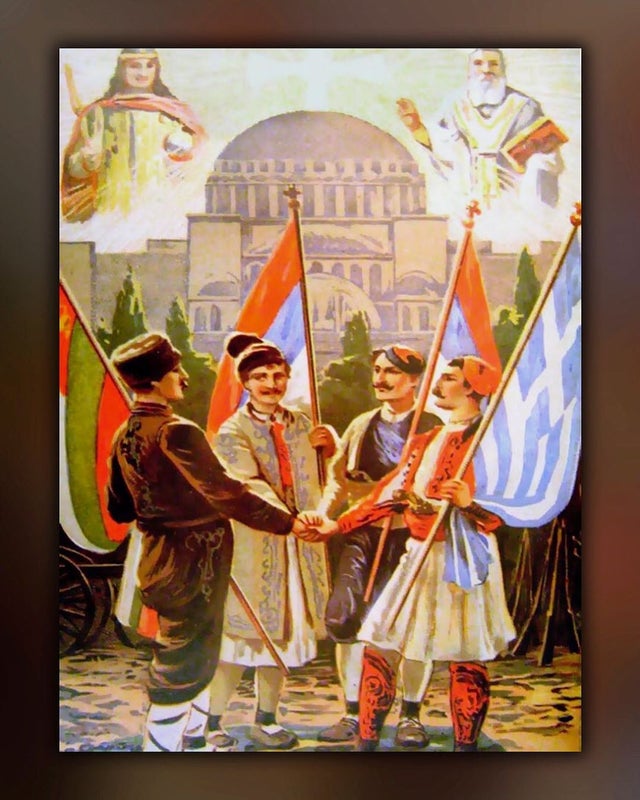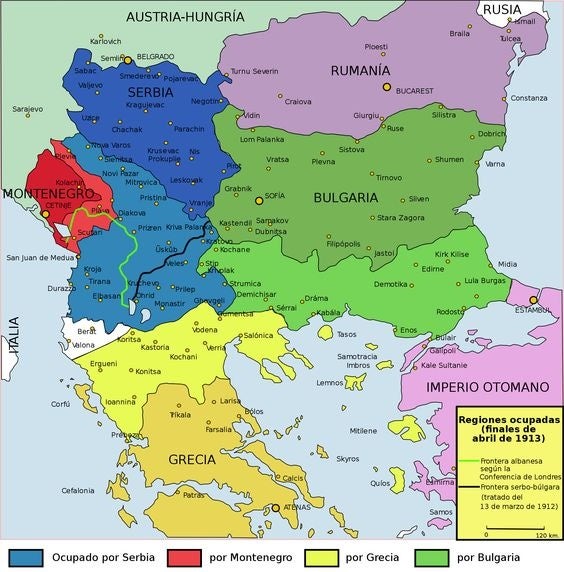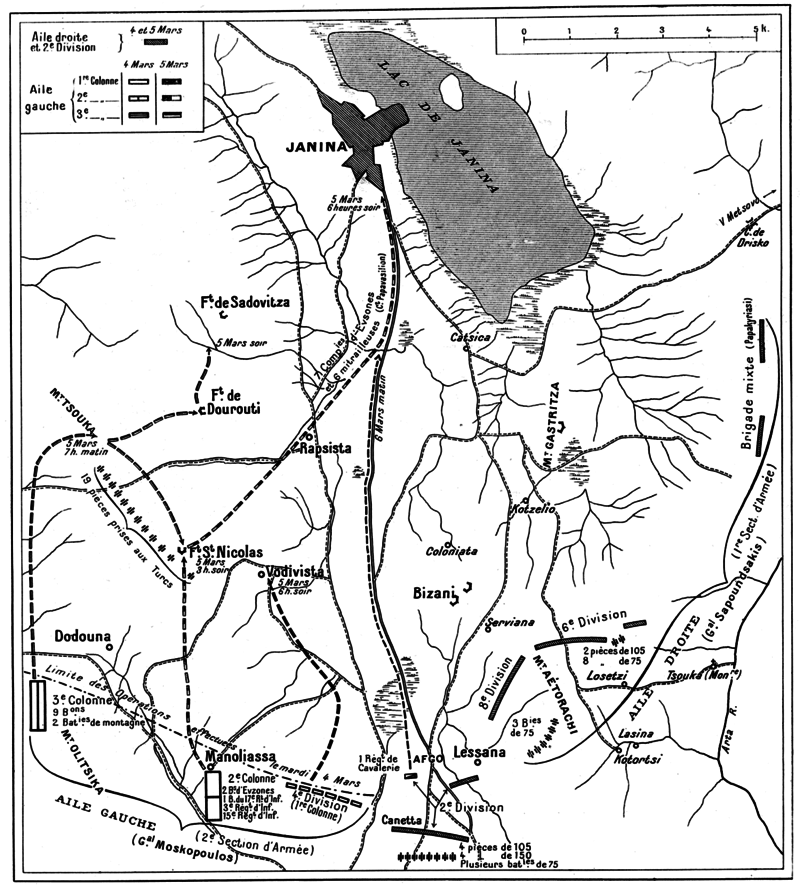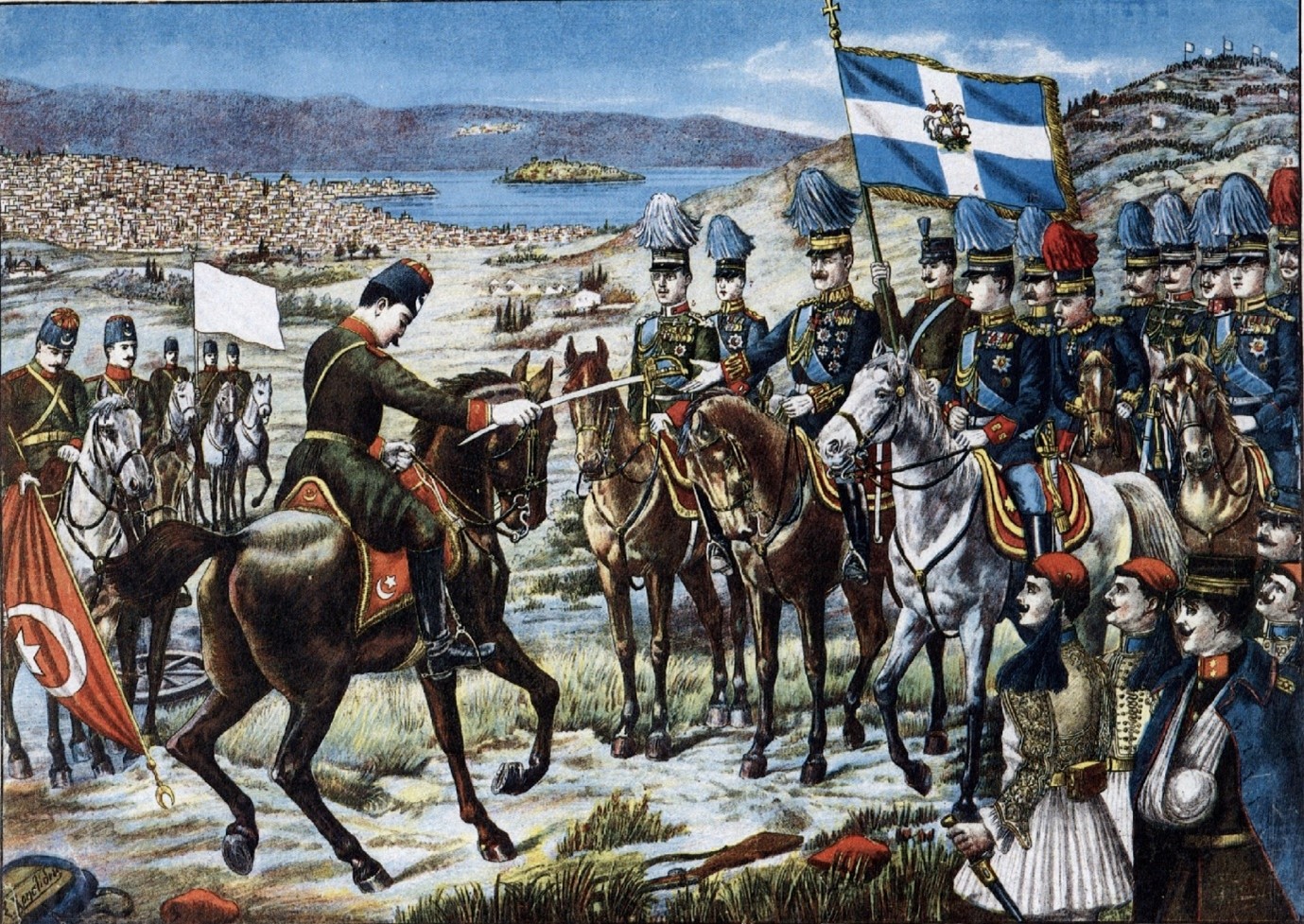By Timoleon Palaiologos,
It is the dawn of the 25th of September/8th of October 1912, and the Kingdom of Montenegro declares war against the Ottoman Empire, following the Ottoman rejection of Montenegro’s ultimatum. Ten days after the war began, Bulgaria, Serbia, and Greece would join the war against the Ottoman Empire, in a decisive attempt to alter the status quo in the Balkans. It was the beginning of the end for the once-mighty Ottoman Empire.
Throughout the 19th century, the minorities living in the Ottoman Empire revolted against Ottoman oppression. The Serbians revolted first in 1804, followed by the Greeks in 1821, the first independent Balkan nation, and then by Bulgaria in 1876. However, independence did not prove to be the end of the Balkan problem, as not all the nationals of these specified states were living inside the national territories and the situation just managed to escalate the tense situation furthermore. The newly-established countries expected that the national completion could only be achieved by the equation of the countries’ borders with the “rightful” lands, that were densely populated by these national minorities. Especially in the Balkans, compared to the Greeks, Bulgarians, Serbians, Albanians, and even Jews, the Turks had a much less significant number of inhabitants.

The First Balkan War, as it was later named to separate it from its successor, the Second Balkan War, saw the Balkan League powers uniting against their common enemy, the Ottoman Empire. The combined forces of the Bulgarians (350,000 soldiers), Serbians (250,000 soldiers), Greeks (120,000 soldiers), and Montenegrins (40,000 soldiers) initially outnumbered the Ottoman Army of around 350,000 soldiers. The Bulgarian army swiftly advanced into Ottoman Rumelia and Thrace, besieging Edirne and capturing important cities, such as Kardhzali, Serres, Kavala, Lule Burgas, reaching up to Çatalca on the outskirts of Constantinople, threatening the Ottoman capital with occupation and entrapping parts of the Ottoman army in the peninsula of Gallipoli. Meanwhile, the Serbians capture Novi Pazar, Skopje, Bitola, and Durrës, and Montenegrins occupy Sandžak and besiege Scutari. The Greek army, led by the Crown Prince Constantine I, occupied Edessa, Kozani, Kastoria, and, on the 26th of October/8th of November, to the surprise of her allies and to the frustration of Bulgaria, captured the most important Ottoman administrative center on the Balkans, the city of Thessaloniki. In the meantime, the Albanians proclaim independence through the Proclamation of Vlore on the 15th/28th of November.
The almost utter capitulation of the Ottoman forces in the Balkans led the Ottomans to a temporary armistice with Bulgaria, Serbia, and Montenegro on the 21st of November/3rd of December, while the Greek army continued their military operations. At the time, the Ottoman presence in the Balkans had been reduced to the Gallipoli peninsula, the Çatalca-Constantinople corridor, and the besieged cities of Edirne, Scutari, and Ioannina. As Greece did not participate in the armistice, the Greek Army continued its operations in the Epirus sector, in order to capture the important city of Ioannina, and whilst it was the only Balkan League ally with a substantial Navy, defeated the Ottomans during the Naval Battles of Elli (3/12/12 o.c.) and Lemnos (5/1/13 o.c.) coercing the Ottoman Navy to never leave the Gallipoli straits again and enforcing her presence, by liberating all of the Aegean Islands previously occupied by the Ottomans (e.g. Crete, Lesvos, Chios, Imvros, etc.). The expiration of the armistice, on the 21st of January/3rd of February, saw the allies preparing to exterminate the Ottoman presence in the Balkan Peninsula.

Battle of Bizani and the Liberation of Ioannina
At the beginning of the war, the Greek army had been split into two forces, the Macedonian and the Epirus sector, led by Crown Prince Constantine I and Lieutenant General Konstantinos Sapountzakis. The small number of troops of the Greek army forced the High Command to prioritize the Macedonian army and thus, the Epirus army was assigned one division and was set to play a defensive role on the Arta-Tzoumerka mountain-range frontline. However, as soon as the war broke out, the Epirus army engaged the Ottoman army on the Battle of Nicopolis on the 20th of October/2nd of November, and on the following day, the Epirus army captured Preveza. On the same day, the Greeks engaged the Ottomans at Pente Pigadia, and after a week, on the 28th of October/10th of November, they managed to capture the pass leading to the city of Ioannina. After the liberation of Thessaloniki on the 26th of October/8th of November, the Epirus army was reinforced, and its role was upgraded from passive defensive to actively offensive.
The Ottoman army had also been reinforced by the retreating Ottoman forces that were assigned to Bitola and were fortified on the Fortress of Bizani, which provided an excellent view of the city and the roads leading to it. At that point, the Ottoman army at Ioannina was completely cut off from the rest of the Empire, as all land routes had been cut off after the capture of Macedonia. The reinforced Epirus army now consisted of new divisions that were reassigned from the Macedonian front, namely the II, IV, and VI Infantry divisions. On the 1st/14th of December, the Greek army tried to capture the Fortress of Bizani but stopped persisting on the 3rd/16th after the strong Ottoman defense. A new attack was ordered on the 7th/20th of January, but after the strong Ottoman resistance, the Greek army ceased operations after 3 days. After this failed attempt, Lt. Gen Sapountzakis was relieved of his command and was replaced by Crown Prince Constantine I.

On the 19th of February/4th of March, the Greek army started an artillery barrage, as a preparation for the following offensive. The next day, the Greek Army, consisting of 7 Infantry Divisions, surprisingly attacked the Fortress of Bizani and bypassed the fortified defenders encircling Ioannina. During the night, the Ottomans abandoned their fortified positions, and a large number of soldiers was captured by the Greek army. On the 21st of February/6th of March 1913, the commander of the Ottoman forces, Essad Pasha Toptani, agreed to the unconditional surrender of the city and its troops to the Greek army. The loss of Ioannina for the Ottomans was followed by the Bulgarians’ capture of Edirne on the 13th/26th of March and the Montenegrin capture of Scutari on the 10th/23rd of April, marking the complete annihilation of Ottoman rule on the Balkans, which was concluded by the Treaty of London that was signed on the 17th/30th of May 1913.
References
- Ιστορικό Αφιέρωμα για την Απελευθέρωση Ιωαννίνων, geetha.mil.gr, Available here
- Λεωνίδας Παρασκευόπουλος, Βαλκανικοί πόλεμοι 1912-1913, εκδόσεις Καστανιώτης, 1999
- Σπυρίδων Μαρκιζίνης, Πολιτική Ιστορία της Νεωτέρας Ελλάδος, τόμος 3ος, εκδόσεις «ΠΑΠΥΡΟΣ», Αθήνα, 1966, σελ. 192-195




